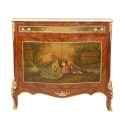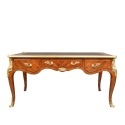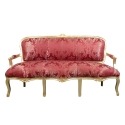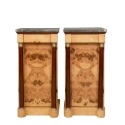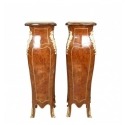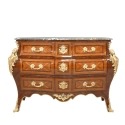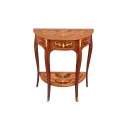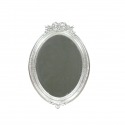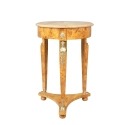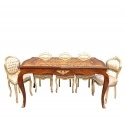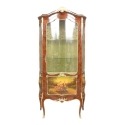Whether selling or doing a good job in a garage sale, we would all like to know what furniture style we want and covet to make our interior a little masterpiece of decoration, and why not have a nice room filled with antiques. To help you choose your furniture, we suggest you to see the most popular styles and the most representative of classic furniture: Louis XV style, Louis XVI style and Empire style.
How to recognize a furniture style?
Know that each style of antique furniture corresponds to a given era. Each era has proposed artistic particularities that allow today to recognize the style of a piece of furniture. The symbols, the ornaments found on each piece of furniture tell a story just like materials, colors and shapes.
In general, the types of furniture were designated either by their function or by their shape. A secretary is used for correspondence and the secret storage of letters in a compartment closed by a flap. Other furnishing items are named according to their location in a room. This is the case of the corner, which is a seat with an angled backrest and which is placed at the intersection of two walls.
Copies flooded the market with industrial production. That's why you need to set the age of the furniture so you do not getfind to pay astronomical sums for simple copies.
Louis XV style furniture
To designate Louis XV furniture , it is generally called rococo or rococo style, baroque inspiration that favors curves, unrestrained and asymmetrical patterns. The style is between 1730 and 1750-60, during the reign of King Louis XV (1723-1774).
The most common woods used at the time were oak, walnut, polished beech, natural, lacquered or painted with soft colors, amaranth wood and violet wood. The cabinetmakers of this period make light, elegant and comfortable furniture of great value.
It is to its precious wood that one recognizes the Louis XV style furniture but also to its ornamentation. Indeed, the asymmetry of the decorations, rich of inspiration of Regency style but also of chinoiseries marked this style. The main motifs found are the shell, acanthus leaf, intertwined foliage, birds, bouquets, fruits and lover's attributes. Bronzes and brass are used on locks, ends of the feet, angles and edges.
Madame de Pompadour, who lived during the central period of the Enlightenment, was one of the greatest patrons for applied arts in France. She encouraged the transition from the Louis XV style to the Louis XVI style. This is called Pompadour style.
The furniture plThey were widespread at the time: the chest of drawers, its bronze and marquetry decorations; the cupboard usually matches a central dresser, the comfortable and light seat, the cupboard and the sideboard, the secretary whose upper part folds to form a writing desk, the table, the desk, the bed, the console and the pedestal table .
Louis XVI style furniture
The Louis XIV style is between 1750-1795 and represents the majesty of the king whose sun is the emblem. Weary of the originality of the Rocaille style, Marie Antoinette is enamored of naturalness and simplicity and has filled the Château de Versailles with furniture marked by sobriety and a well proportioned balance. The geometric shapes are inspired by the discovery of the remains of antiquity in Herculaneum and Pompeii.
Louis XVI furniture is known for its wood: mahogany is very popular, whether speckled, moiré, chenille or roudeux. Rosewood, beech, waxed walnut, maple, yew, amaranth and oak continue to be worked by cabinetmakers. Ebony returns to fashion after being banned under the Regency.
As for its ornamentation, symmetry and minimalism are in order. The moldings are inspired by ancient themes. The patterns that are found are the rustic attributes, the ribbon bow, hearts pierced with arrows, pine cones, garlands of flowers. Gilding is still present but is used more discreetlyyou and finer. Parallel or spiral grooves adorn the conical legs of the seats. Flutes are often found on friezes and flower beds.
The most characteristic furniture of the period are the high and low cabinets as well as the libraries. However, this did not stop the cabinetmakers from changing the style of some furniture such as chairs and armchairs Louis XVI style. The back of this seat will take the form of medallion, escutcheon or cocked hat.
Empire style furniture
This style made its appearance with the reign of the Emperor Napoleon I and is between 1804 and 1815. It is recognizable by its massive furniture, luxurious and ostentatious. The most used woods are mahogany, sometimes encrusted with ebony, maple, elm burl, lemon tree. Few are the painted furniture.
Its ornamentation is especially marked by straight columns, tapered with laurel motifs in gilded bronze. There are very few sculptures in the Empire style, while the motifs are matt or shiny bronze, or gold, black. We find the ancient and warlike trophies, the imperial emblems: the crowned "N", the bee, the imperial eagle, the sphinxes, the griffins and the chimeras. The feet of these furniture are heavy, columnar, baluster, saber sheath and extend by female heads or winged sphinxes.
The characteristic furniture of stThere are heavy seats, dark wood dressers, consoles, desks, psyches with solid base pedestals, cupboards, bookcases and beds often placed on a platform.
You can now recognize these three different styles. You can then prepare for negotiations with your dealer.
Less

